Pansonic Avionics made great waves with its new IFE seat-end system – the Astrova. How does it stack up?
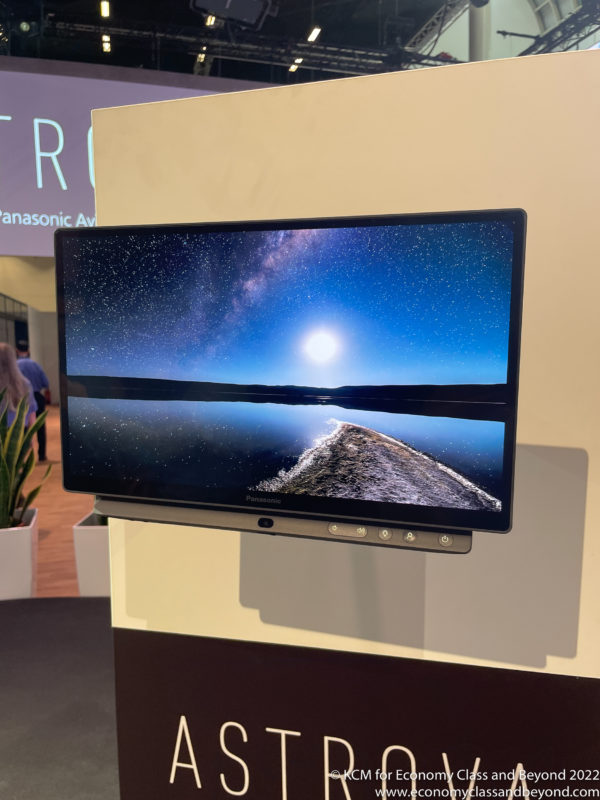

Two Astrova screens at launch
Astrova is Panasonic’s new “seat-end” unit (or what we know better as the IFE screen). It is an OLED (Organic Light Emitting Diode) Screen.
You might have seen OLED screens around the home from LG, Pansonic and Sony – as well as others who use the technology.
The screen is rated for High Dynamic Range use too.
There’s a good primer on the OLED technology on Wiki. However, for this discussion, An OLED display works without a backlight because it emits visible light, so black levels are insanely good whilst allowing for thinner and lighter displays.
Astrova provides both wired and Bluetooth connectivity to the seat, allowing for passengers to have a “second screen” for the IFE system (because as well all know when at home, we’ve got the TV on, whilst we’re mindlessly scrolling our phones).
The seat-end units are fitted with a technology chin bar that contains connectivity options in it, with the possibility of line maintenance work for the chin bar to easily add, upgrade or remove features such as USB power, Bluetooth audio, and other options.
Astrova also promises 67 watts of power per seat, delivered over USB-C.
The system also features programmable LED lighting that enhances passenger experience and enables airlines to optimise the cabin environment. Airlines can easily change the lighting to complement various phases of flight like food and beverage service.
Integration
Economy Class and Beyond took a close look at Astrova in two situations – mounted on display and a seatback. We’ll look at the seat back first.
This is featured in the new Recaro CL3810 that we covered on the blog.
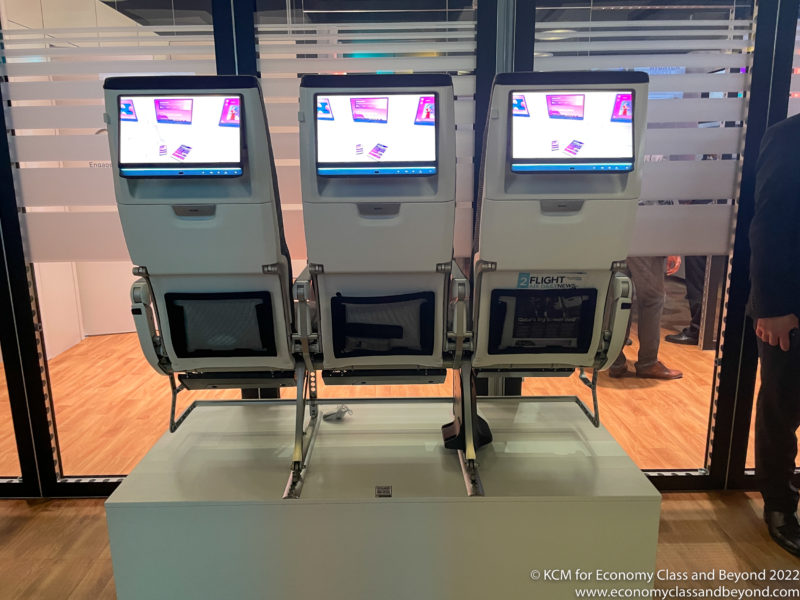
Astrova IFE system mounted on the Recaro CL3810.
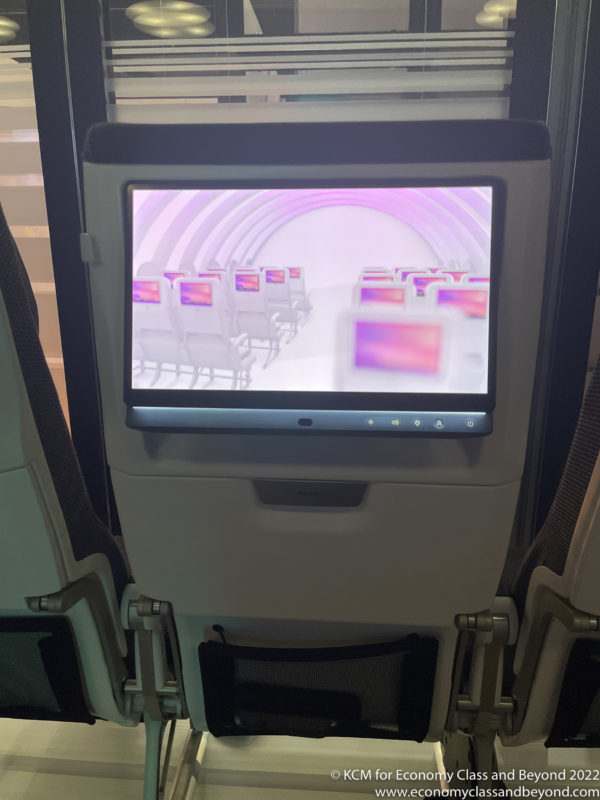
Single monitor
The chin-bar can also be synchronised to the cabin lighting or can be customised by the passenger.

As to how thin this unit is, it’s millimetres thin, with the screen having OLED thinness, with some support in the aft screen to support the system.
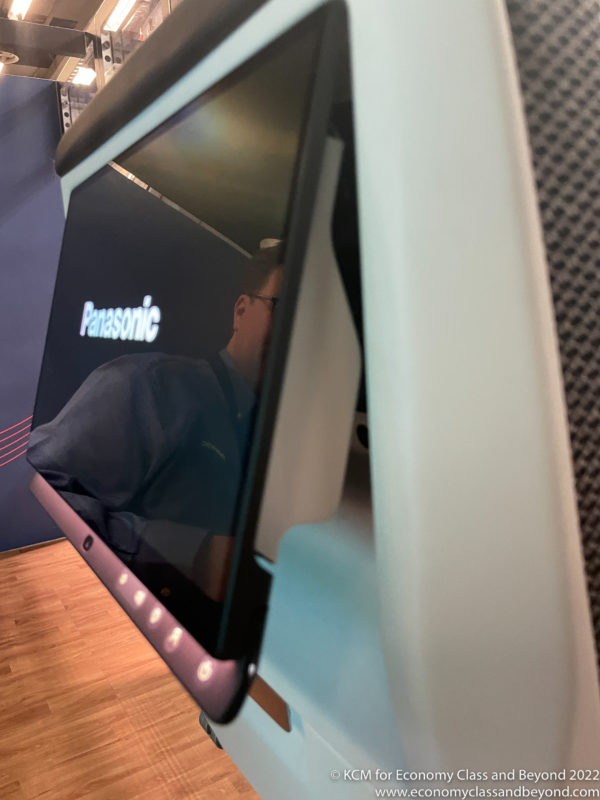
Astrova can be integrated with current IFE servers – Panasonic Avionics’ systems such as eX1, eX3, and NEXT,
When mounted to the walls, the demonstrations were impressive, with rich colours. However, there is one demonstration that was of interest – the power draw demonstration. For this demonstration, Pansonic Avionics had rigged up a load generator to pull 67watts of power down the line. And it works

I checked in on this on Day 1 and Day 2 and whilst there were slight variances, it was delivering the 67 watts out of the socket as promised.
A game changer? Possibly.
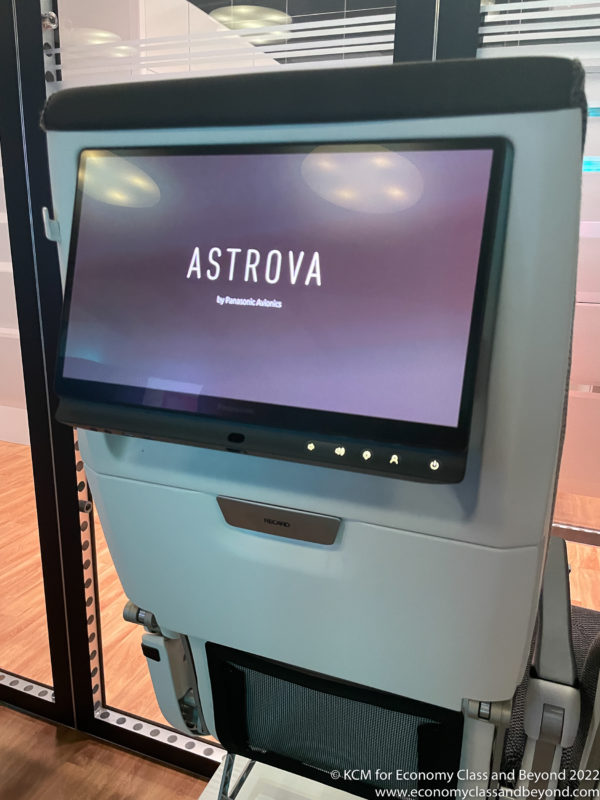
Astrova has the promise to enhance the passenger experience in the sky, by bringing the quality of the big screen and high-quality laptops to the air.
And I have high hopes for it. Even its first customer seems impressed, with Qatar Airways taking delivery of the screens.
However, whilst I have confidence that Pansonic Avionics have tried to engineer their way out of OLED’s biggest problem (screen burn-in), the bigger issue will be the IFE servers on an aircraft, with the content required.
It is fine having 4K capable screens with a High Dynamic Range, but the content will be the final judge.
And considering how my 480p content we’ve all seen in the skies, IFE delivery will have to be carefully considered to ensure that these screens are fed the right content to show.
Welcome to Economy Class and Beyond – Your no-nonsense guide to network news, honest reviews, featuring in-depth coverage, unique research, as well as the humour and madness I only know how to deliver.
Follow me on Twitter at @EconomyBeyond for the latest updates! You can follow me on Instagram too!
Also remember that we are part of the BoardingArea community, bringing you the latest frequent flyer news from around the world
69W to charge your laptop over USB-C while flying seems crazy, doesn’t it?
You are asking the right questions about content. What’s good a Ferrari if you have to run it on 89 octane? I am pushing the industry to HDR in APEX0415, and specifically think 1080p HDR is best solution for our industry, “best pixel per Megabyte”.
Panasonic started the 4K and rest jumped on that bandwagon. So now trying to get airlines to buy 1080p screens would be a tough, since even laptops are moving to QHD or UHD.
Push for upscaling!!